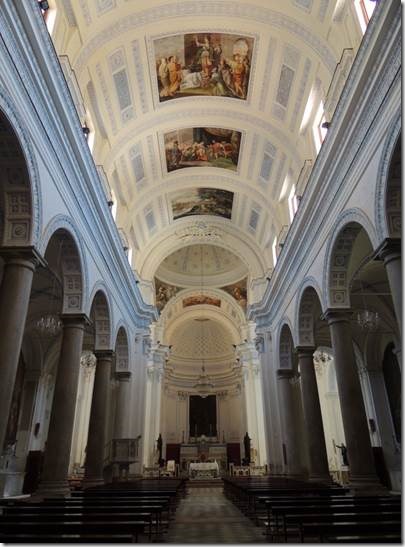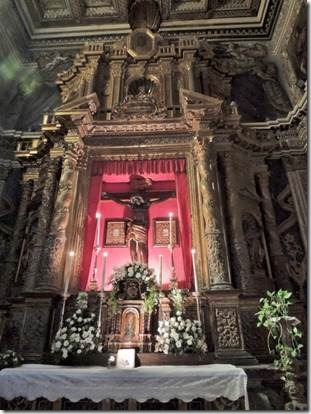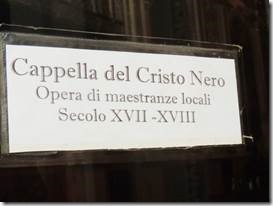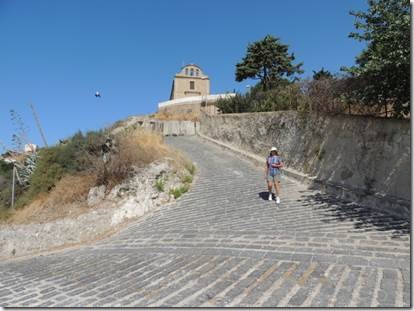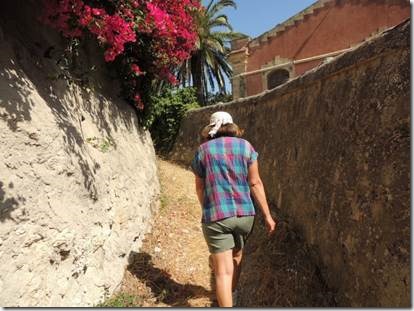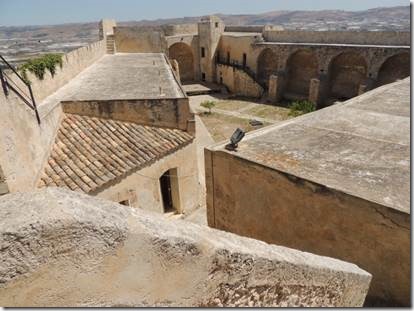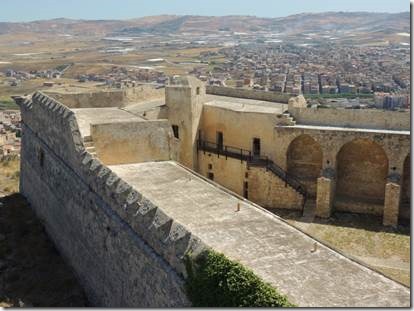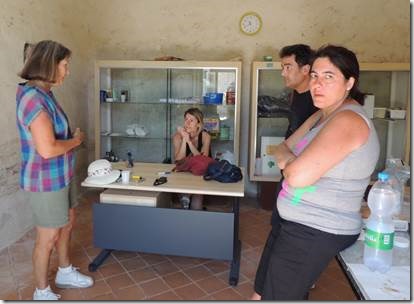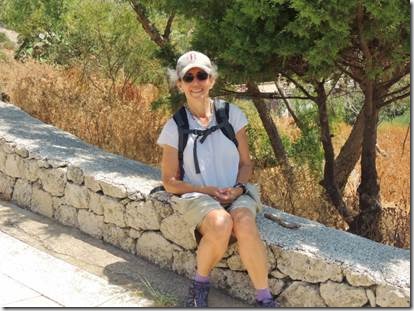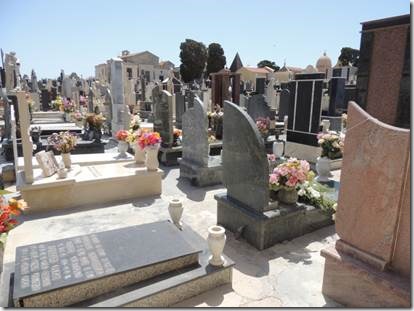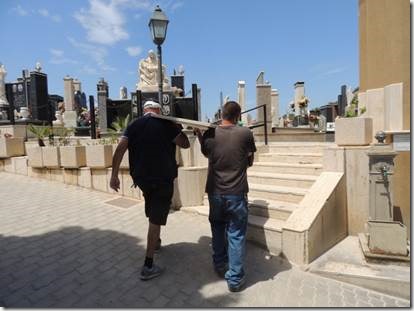Asalama,
Ramadan began yesterday evening at sundown. •"Kul ‘am wa enta bi-khair!" ("May every year find you in good health!")
We are getting everything ship shape and it seems we’ll be aiming for Spain just across from Gibraltar. We will leave either tomorrow mid-day or Thursday. It’s a 6 day trip, the longest of our passage to London so far.
I am off to Bravo, the small grocery store a few blocks from the marina. The options are limited but they do have some fruit and eggs. We can survive on PB and J and tuna so no problem there as long as I have some fruit and veggies.
One more email about Licata then I’ll begin to write about Tunisia
Ru
It was great having Linda and Frank at the marina in Licata. Not only did we travel together to Palermo, but one morning Linda and I went off to explore Licata. Wish we’d met earlier in our stay there. We also traded dinners on each other’s boats. They were leaving Licata on their way to cross the Atlantic and then go on to the Caribbean.
|
Our first stop was the Church of Santa Maria Nuova . It’s hard to find in depth information in English about Licata so I can’t verify the story about the “black Jesus” having been blackened by fire. Some of you out there still working in libraries might see what you can find and let me know. It does make a good story but I’d prefer a true story. “A visit to Licata can start from the Mother Church, completed in the early 16th century in the Renaissance style. The church has three naves with a transept, and was called "Santa Maria La Nuova", to distinguish it from the old Cathedral. The dome was painted by Raffaele Politi (1783-1870). Among the paintings in the church, many are by Fra’ Felice da Sambuca (1733-1805). The altarpiece depicting the "Nativity of the Virgin and the Saints Peter and Paul and an Angel” is by an anonymous Flemish artist and dates from the first half of the 17th century. In the right chapel is a wooden Crucifix dating to the 15th century, the so-called "Black Crucifix"*. * The “Black Crucifix” is a 15th century work by artists from Messina. It became black after the Turks sacked the town and burned the church – the crucifix itself was not burned but was blackened by the fire.” http://www.italythisway.com/places/licata.php The painted ceiling of the main church |
|
Trompe L’oeil |
|
Chapel of the Black Christ I think the sign says it was made by local artisans between the 17th and 18th centuries by local craftsmen but the website says 15th century made by artisans in Messina on the north east coast. |
|
A contemporary artist working from postcards and a magnifying glass |
|
I wish I’d have liked his work well enough to have bought one; but I didn’t. |
|
Walking to the top of the hill to The Church of Maria SS di Pompei and Castel Sant’Angelo “Castlel Sant’Angelo (the late sixteenth built as a fortification for the sight where you can see much of the coast.” |
|
Almost at the church |
|
The church was closed unfortunately as whomever this is had an appointment in town. He did tell us the short cut behind the church to the castle. |
|
Info only in Italian. In July 1553 the city was plundered and destroyed by the pirate Dragut, causing its decision to erect defensive walls and a tower on the Sant’Angelo hills. http://www.initalytoday.com/sicily/licata/ Licata decayed under the Saracens but flourished under the Norman, guarded by the "Limpiados" sea fort, the third one in Sicily. In 1392Licata became a demesnal town and Frederick II called it "Urbs Dilettissima". In 1542 an earthquake destroyed the town walls. In 1615 the third castle was built on Monte Sant’Angelo. In 1943 the Americans landed at Licata, starling the conquest of Sicily. On the Sant’Angelo hill in addition to the Castle there is a hypogean sanctuary and a prehistoric necropolis. http://happening.kalat.org/?q=en/node/187#sthash.WC7pPgxA.dpuf |
|
Linda did her “my momma was born in…and my poppa was born in….so we got a special tour, cold water and hot strong coffee. |
|
Linda swapping stories with the staff of the Fort. |
|
Looking down from the ramparts. Views from the fort: the huge Licata cemetery and the old harbor. |
|
Resting before heading down from the fort to the cemetery. |
|
This cemetery worker couldn’t recall seeing the family names Linda asked about. |
|
It was a huge cemetery |
|
Our friend Lee Licata said anyone with the last name Licata probably had family from Licata Putting up a new head stone. |
While hunting around for info about the Church of Maria di Pompei I found this website. http://www.conigliofamily.com/LaSocieta.htm shows a picture of America’s immigrant story linking Licata to Buffalo, New York.

